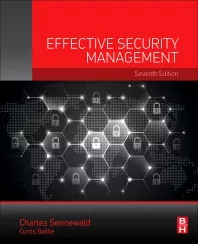Secure the Enterprise with Effective Background Screening
Employment background screening helps employers identify qualified applicants and helps mitigate risk by improving workplace security and safety.
As the economy rebounds and hiring increases, risks to employers also increase with every new employee added to their organizations. Who are these potential hires, where have they worked, where did they go to school, and do they have a relevant criminal history to consider? Employment background screening helps employers identify qualified applicants and helps mitigate risk by improving workplace security and safety. According to the 2014 HireRight Employment Screening Benchmark Report (“2014 Benchmarking Report”), 88 percent of survey respondents reported that employment screening exposed a job candidate who lied on a resume. The benefits of having a thoughtful and effective background screening program are illustrated by the example of one company whose background check revealed that a seemingly stellar candidate for an executive position had actually defrauded his previous employer in the amount of $500,000. Background checks help enable organizations to make informed hiring decisions and to help ensure the most qualified applicants are hired.
Security as the Screening Gatekeeper
Although background screening is part of the hiring process, it’s often a shared responsibility between human resources and security departments. A highly effective screening program can be developed where HR and security, along with the organization’s legal counsel, work together to create, develop and maintain a screening program best suited for the organization. It is vital to consider the complexities, including: verifying credentials and qualifications; properly identifying and evaluating criminal history or security risks; complying with all federal, state and local laws and regulatory requirements; consistency and non-discrimination in application; and providing a positive candidate experience. When the HR, security and legal teams are working independently as islands of functionality, it can lead to inconsistent, ineffectual and/or potentially non-compliant screening, thereby creating potential security and compliance risks. By working together cohesively with HR and legal, the security team can also function as the final gatekeeper to help ensure that the organization is screening in accordance with its policies and that every candidate has properly cleared the company’s background check standards.
Technology Solutions: Screening and Access Control
Technology solutions continue to offer new ways to manage screening, such as integrating background screening systems with both HR recruiting systems and security badging and access control systems. For example, access control software can be set up so that it will not allow a company access badge to be issued to a new hire, or even a vendor or temporary employee who works in the company facility, until that person has cleared the background check. In this way, organizations can leverage technology to help ensure that steps are not missed in the background check and hiring process.
Mind the Gaps: Don’t Make These Common Screening Mistakes
While industry data indicates that most employers today are conducting some form of employment background screening, many employers have significant room for improvement in their screening programs. The risks of an ineffective program can be substantial; for example, negligent hiring cases have had verdicts of up to $45 million, and employers have lost more than 79 percent of negligent hiring cases.
Global Screening: According to the 2014 Benchmarking Report, only 15 percent of all respondents conduct global screening to verify the qualifications and check criminal histories of candidates who have been educated or worked in other countries (although that number increases to 33 percent for large companies). Since the vast majority of companies are not screening their employees with international experience, they may be increasingly vulnerable to unqualified applicants and/or security risks.
Contingent Workforce Screening: The contingent workforce, including temporary workers, contractors and vendor employees who have access to a company’s facility, personnel or data, makes up a critical part of the workforce. Those individuals often aren’t screened at all, or to the same standards as permanent employees. For example, the 2014 Benchmarking Reportfound that only 32 percent of respondents screen their contingent workforce. Often, the reason the contingent workforce isn’t screened can be that these individuals don’t get hired through the same on-boarding process as company full-time employees. They’re instead contracted through individual departments, such as the IT, accounting or marketing departments, or are hired through staffing agencies, and as a result, bypass the normal hiring procedures. Security therefore can serve as the final gatekeeper to ensure proper screening is completed for all workers before access badges are issued.
Recurring Screening: Some organizations periodically re-screen existing employees after-hire in an effort to help reduce the employer’s long-term risk by keeping better informed through the life of the employment relationship. However, the 2014 Benchmarking Report found that only 20 percent of organizations re-screen employees after hire. Staying informed of relevant employee conduct during the course of employment can further help an organization to mitigate risk and protect against negligence lawsuits.
Drug Testing: While drug and alcohol screening can be an important part of screening both before and after hire, only 58 percent of the 2014 Benchmarking Report’s survey respondents indicated their organization conducts drug and/or alcohol testing – leaving an estimated 42 percent who are not. Drug use can cause significant workplace security and safety concerns, as well as impact employee productivity and effectiveness, so it’s a step that shouldn’t be overlooked in the screening process.
Screening Best Practices
In addition to these often overlooked areas for program improvement, many organizations haven’t conducted regular audits of their screening programs to ensure that their policies and procedures are in line with current industry and regulatory guidelines. Background screening is regulated by the Fair Credit Reporting Act (FCRA), various state consumer protection and employment laws and even industry-specific regulations, so it’s important that companies consult with legal counsel to review background screening policies and procedures to ensure their program is compliant with all requirements. The following is a summary of some screening best practices to consider:
Be Consistent: Establish a Written Standard
Create a written policy that documents who will be screened, what will be checked and how that information will be evaluated and used in the hiring decision. This helps to ensure that the organization performs screening in a consistent manner and that the information is used appropriately in making hiring decisions.
Validate Address History and Social Security Number: Note Discrepancies and Past Addresses
A list of the candidate’s current and past addresses obtained through an address history check, usually based on his or her Social Security number (SSN), is often the foundation for a thorough background check. Knowing past counties the person has lived in is useful for at least two reasons: (1) to identify in which counties to look for criminal records; and (2) to compare against the information the candidate provided in order to identify time gaps and location mismatches in his or her history.
Expose the Criminal Factor: Conduct a Comprehensive Criminal Check
Because there’s no complete and publicly accessible centralized repository of all U.S. criminal records, it’s often a best practice to begin criminal background searches at the individual county courthouses associated with the candidates’ address history, which can further be extended to include locations of work and education. County searches are an effective screening tool since felonies and misdemeanors are typically prosecuted at county courthouses and their outcomes may not always be reported to state or federal agencies.
It can also be effective to expand the geographic scope of screening by conducting a national criminal search. While not comprehensive of all records in all jurisdictions, a national criminal search can help to locate additional records in places a candidate may have visited or places of residence and employment that weren’t otherwise disclosed, revealed or searched.
While nearly all surveyed organizations (95 percent of respondents to the 2014 Benchmarking Report) reported conducting criminal history checks, many are now reviewing and revising their policies and procedures around criminal record screening. The EEOC, for example, has recently issued updated guidance in the use of criminal records in employment screening, seeking to further prevent discrimination through individualized assessment by employers and warning against maintaining blanket policies that prevent all applicants with criminal records from being considered. In part as a result of this updated guidance and otherwise changing regulatory environment, nearly one third (31 percent) of respondents to the 2014 Benchmarking Reportindicated their organization had revised their criminal history check policies within the past year.
Confirm Work History: Verify Past Employment
It’s a current best practice to verify the employment dates, actual compensation (when available), and job titles provided by the candidate by contacting their past employers. Not all past employers can be found because some may have gone out of business or moved, and others may have merged or been acquired. In such cases, an option is to ask the candidate to provide copies of first and last paystubs and W-2 forms.
Validate Education: Verify Degrees Obtained
When degrees or education are crucial for a position, it’s important to validate the candidate’s credentials by contacting listed educational institutions. In recent years, there have been several well-publicized incidents of applicants overstating their education, perhaps because they assume employers won’t verify their education. It’s also helpful to confirm that the degree isn’t from a “diploma mill,” a company that sells fake or otherwise unaccredited degrees. Often these companies have a website and call center where “degrees” are verified, but the candidate didn’t complete any education requirements to earn them.
Check Driving History: Order Motor Vehicle Reports
A motor vehicle records (MVR) report can be a good way to identify candidates’ inappropriate driving records (and thereby help limit organization risk) when it comes driving-related positions. It may even help keep the organization’s insurance rates down. Consider that in some states, convictions for driving under the influence of alcohol or drugs may not be found in the criminal court records, but rather in a MVR check.
Security and New Hiring Demands
As the economy improves, competition for hiring the best qualified candidates is increasing, and speeding time to hire is a high priority for employers. At the same time, employment screening has only become more complex amid the changing regulatory landscape. Security departments are feeling the pressure of these demands, and often as the ultimate gatekeepers for screening, security professionals continue to strive to find new ways to maintain and enforce their organizations’ high standards in effective and compliant background checking.
About the Author: Rachel Trindade is the vice president of marketing at HireRight.
Looking for a reprint of this article?
From high-res PDFs to custom plaques, order your copy today!






